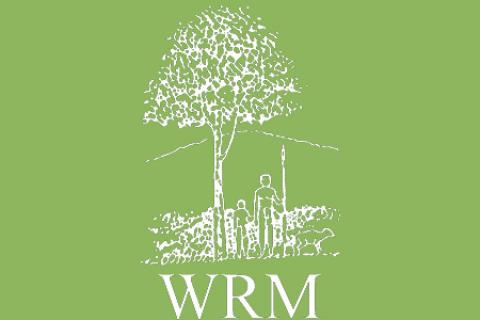According to the Danish Data Protection Agency, the environmental NGO Nepenthes is not allowed to advise Danish consumers against purchasing from shops where they risk buying garden furniture whose production has contributed to the destruction of rainforests.
Other information
Solomon Islands in the western Pacific have been ravaged by nearly three years of civil conflict. The economy is in tatters, the main city Honiara is run by militant groups, and most education, health and public service functions are not working. In this climate the corruption ridden, destructive and often illegal industrial logging sector has continued unabated.
The 21 Indigenous Communities comprising the Federation of Awa Centres in Ecuador (FCAE) have legal deeds for 120,000 hectares in the Northwest of Ecuador, a region of humid forests and great biological diversity, known as the Awa Territory and containing the last expanse of Chocoano forests remaining in Ecuador.
In Chile, 25 years of implementation of the neo-liberal economy model have had a strong impact on native forests and indigenous and local communities in the South. Over two million hectares of pine and eucalyptus plantations feed a large cellulose industry, geared for export. Over this period, hundreds of thousands hectares of native forests were converted into monoculture tree plantations. An accelerated concentration of land ownership, aided by State subsidies to plantations has led to serious territorial conflicts with the Mapuche indigenous communities, still continuing today.
Over the past few years, an increase in the participation of rural producers’ families and their economic and representative organisations has been noted in activities relating to management and conservation of resources in the Brazilian Amazon.
The National Network of Forest Practitioners (NNFP) is a grassroots alliance of rural people who are striving to build an ecologically sound forest economy whose benefits are accessible to communities that have traditionally depended on the forest for their well-being. NNFP’s 500 members include community-based non-profits, small businesses, indigenous groups, forest workers, researchers, agency officials, and landowners.
Recently some forty locally based community practitioners, academics, graduate students, and NGO heads (see http://www.nnfp.org and http://www.ncfc.org for more information) met for four days at the Federation of Southern Co-operatives ( http://www.fsclaf.org ) in Epes, Alabama, USA, in order to discuss trends in community forestry (CF) and community-based ecosystem management (CBEM) in the United States.
The Department of Rio San Juan is located near the southern frontier of Nicaragua, bordering Costa Rica, and the municipality of El Castillo is on the river between the Lake of Nicaragua and the Caribbean. During the eighties, the United States attacked us with a low intensity war that eroded the economy and uprooted Nicaraguan families. At the end of the war, during the nineties, twelve thousand people from Costa Rica and other parts of the country, immigrated to the Municipality.
The Central American Community Agro-forestry Indigenous and Peasant Co-ordination Association, known as CICAFOC, operates in Central America --involving Guatemala, Belize, El Salvador, Honduras, Nicaragua, Costa Rica and Panama-- and is a community-based social, non profit-making organisation, gathering organised associations, co-operatives, federations and community groups of small and medium sized agro-forestry producers, indigenous people and peasants.
More than ten years of negotiations between government officials, local community groups and non-governmental organisations (NGOs) have led to a draft community forest bill which would be Thailand’s first legislation recognising the legal status of communities living in and around Thailand’s National Forest Reserves to use, manage and protect their forests in co-operation with the Royal Forestry Department.
The rapid depletion of Filipino forests by logging, mining and settler encroachment was officially acknowledged as requiring a policy response in the late 1980s. The need to limit and regulate logging and to promote community forestry alternatives was accepted by government by the end of the decade. In 1990, the government adopted a Master Plan for Forestry Development which entailed an attempt to ‘scale up’ previous community-level initiatives in forest management.
The Indonesian NGO movement has been supporting CBFM start since 1995. The main message of the start-up phase was that most of the CBFM models that developed in a sustainable way were based on community wisdom, culture and custom.
